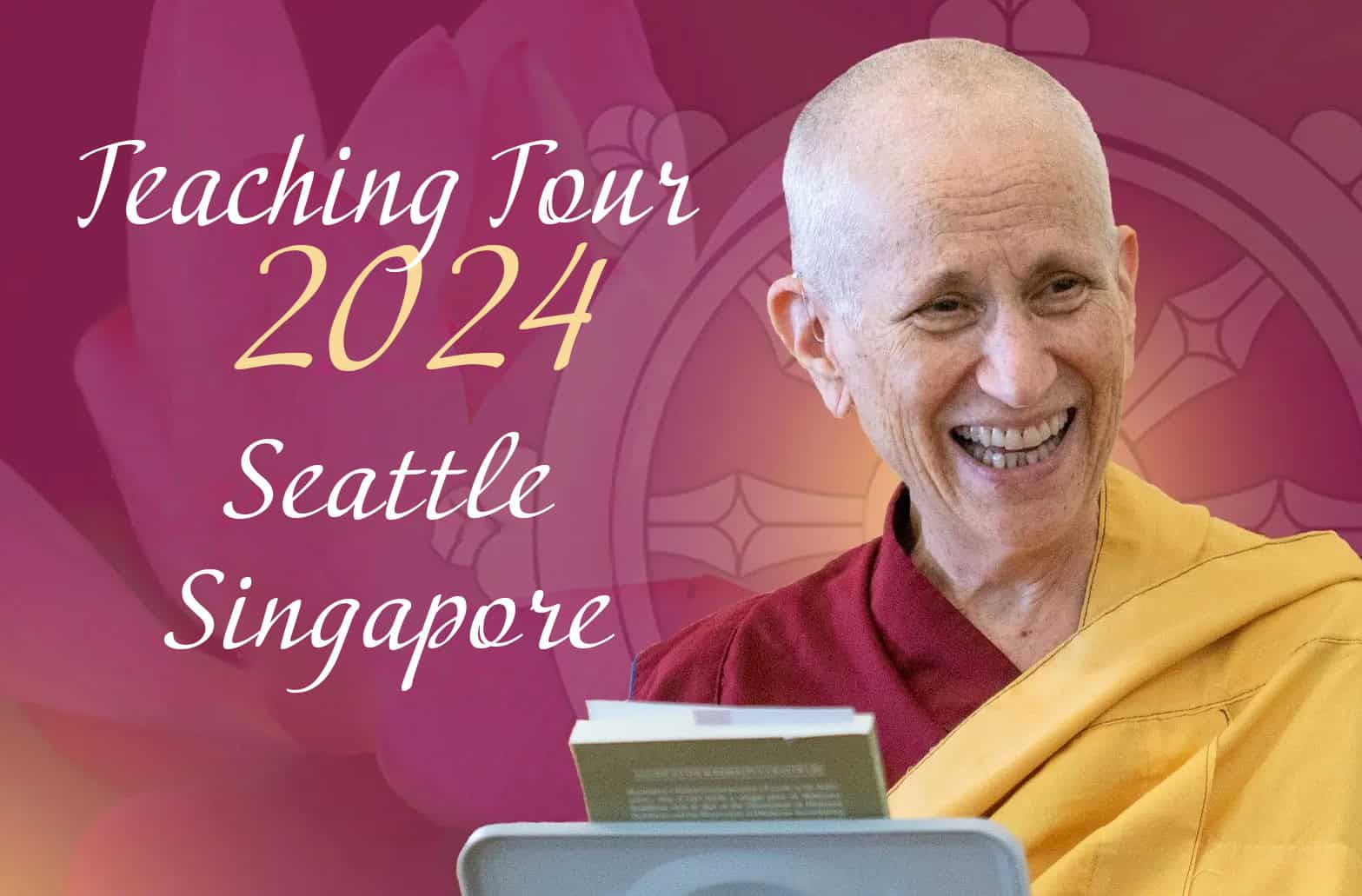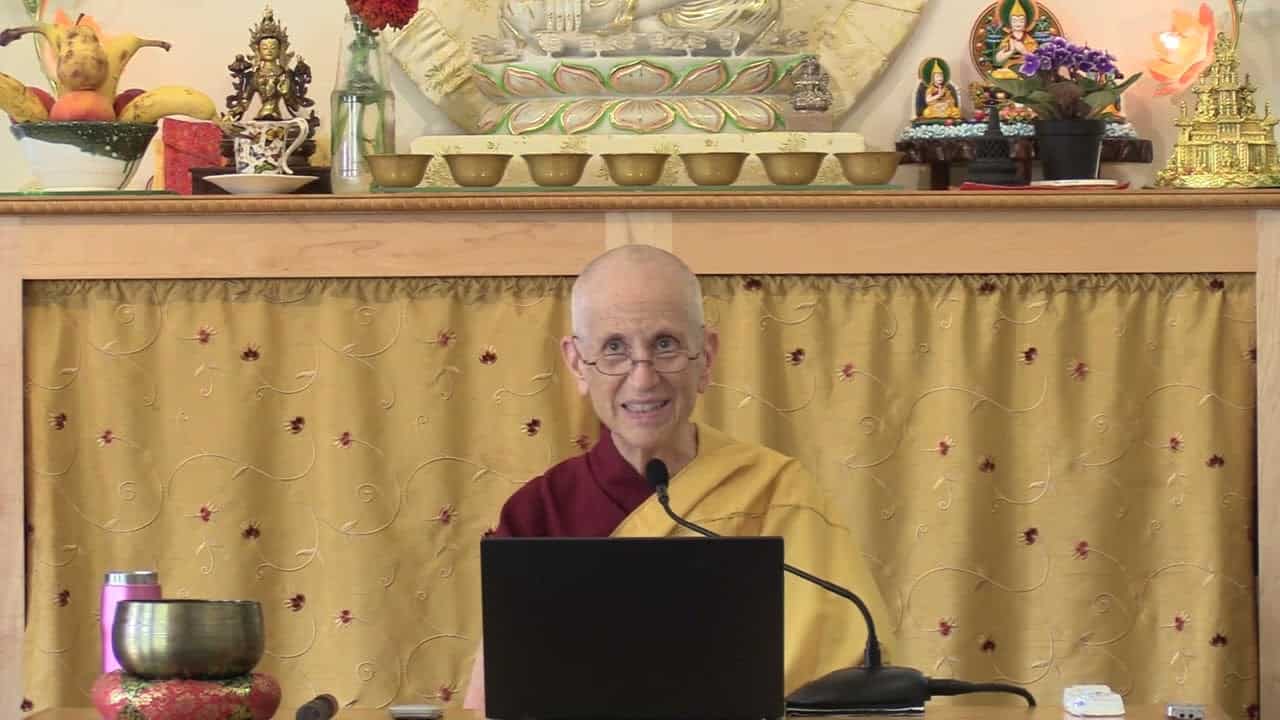Distinguishing features of the Three Jewels
20 Following in the Buddha's Footsteps
Part of an ongoing series of teachings based on the book Following in the Buddha's Footsteps, the fourth volume in The Library of Wisdom and Compassion series by His Holiness the Dalai Lama and Venerable Thubten Chodron.
- Six different qualities or abilities of the Three Jewels
- Defining characteristics, awakening influence, and distinct qualities
- The way we appreciate them, our practice and creation of merit
- Causal refuge and resultant refuge
- Resultant refuge based on the dispositions of three types of practitioners
- Causes for taking refuge
- How to think about taking refuge
20 Distinguishing Features of the Three Jewels (download)
Contemplation points
- Why is taking refuge in all three of the Three Jewels important and why?
- Why is each of the six distinguishing features important in your refuge practice: defining characteristics, awakening influence, recollect the distinct qualities, appreciation, practice, create and increase our merit? For each of the six, make examples of how you have related to or could relate to each of the Three Jewels.
- Describe how resultant refuge can vary according to the disposition of the practitioner?
- What is your causal refuge? What is your resultant refuge? How are they different and how are they the same?
- How does the causal refuge help you to actualize the resultant refuge?
- Why does reflecting on the qualities of the Three Jewels have the ability to transform our attitude about life into one with great purpose and a long-term perspective that brings reliance in the face of life’s vacillations. How have you found this true in your own life?
- How does our refuge in the Three Jewels change over time and why?
- What are the three (four, in the case of the Mahayana) causes of refuge? Why are each of these an important aspect of refuge?
Venerable Thubten Chodron
Venerable Chodron emphasizes the practical application of Buddha’s teachings in our daily lives and is especially skilled at explaining them in ways easily understood and practiced by Westerners. She is well known for her warm, humorous, and lucid teachings. She was ordained as a Buddhist nun in 1977 by Kyabje Ling Rinpoche in Dharamsala, India, and in 1986 she received bhikshuni (full) ordination in Taiwan. Read her full bio.


